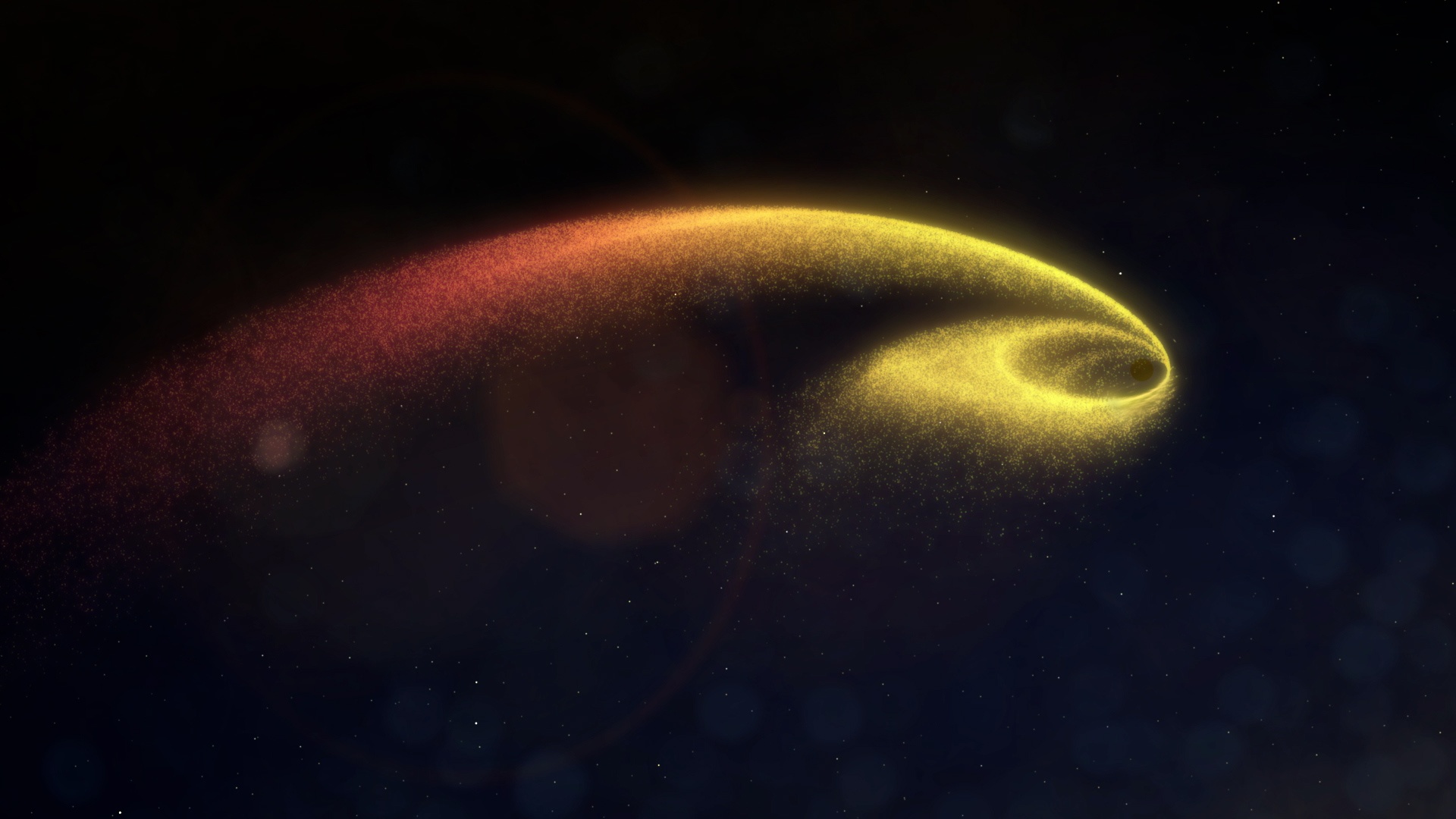In the beginning, the Universe was so hot and so dense that light could not travel far. Photons were emitted, scattered, and absorbed as quickly as the photons in the heart of the brightest stars. But in time the cosmos expanded and cooled to the point that it became transparent, and the birthglow of the Big Bang could traverse space and time for billions of years. We still see it as the microwave cosmic background. As the Universe expanded it grew dark, filled only with warm clouds of hydrogen and helium. In time those clouds collapsed to form the first stars, and light again filled the heavens.
None of the stars we see today were among those first stars. Modern stars are rich with elements such as carbon and iron. Heavier elements only formed in stellar cores and other astrophysical processes. The first stars we made only of hydrogen and helium. They must have been massive beasts, with fleeting lives that ended in brilliant supernova explosions. Only their remnants remain. There have been several deep sky searches for these first stars, but we have so far not seen them. There is some indirect evidence of them in the distant Universe, but we have not yet seen their light. Now a new study argues that the Nancy Grace Roman Space Telescope might capture their dying radiance.

Formally known as the Wide-Field Infrared Survey Telescope (WFIRST), The Roman Space Telescope is scheduled to launch in late 2026. Like the JWST, it will observe the cosmos in infrared, but Roman will have a wider field of view. This will better enable it to find the highly redshifted light of the first stars. However, the authors note that given the short lifespan of these first stars, Roman will not likely observe them directly. They instead propose looking for evidence of these stars as they are consumed by a black hole.
Specifically, the team proposes looking for what are known as Tidal Disruption Events (TDEs). When a star passes near a black hole, the gravitational tidal forces of the black hole can rip the star apart. As a result, the remnants of the star can be strewn across a large arc. This process takes time and creates a stream of heated gas. The authors modeled the emission spectra of this gas for a first-generation star and found they have a unique signature that lasts for a considerable amount of time. Much of the light from such a TDE would be emitted in the strong ultraviolet, but since they would occur at a cosmic redshift of about z = 10, the light we see would be shifted to the infrared, making it observable by JWST and the Roman Space Telescope.
The authors note that the rate at which TDEs occur for first-generation stars depends on several factors, but given reasonable estimates Roman could expect to see tens of these TDEs per year. So in a few years, we might finally be able to capture the last dying light of the first stars.
Reference: Chowdhury, Rudrani Kar, et al. “Detecting Population III Stars through Tidal Disruption Events in the Era of JWST and Roman.” arxiv preprint arXiv:2401.12752 (2024).

